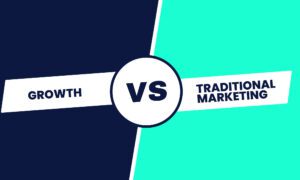B2B e-commerce business has emerged in the past few years to revolutionize the B2B business models of organizations.
- According to new estimates, the global B2B e-commerce market will reach $28.6 trillion by 2027.
- A study reveals that 70% of B2B buyers prefer to use online mode of buying instead of conventional buying.
This change is not only dictated by the relation between buyers and sellers interests but also indicates the fact that more and more firms’ sales come from digital platforms.
Significance of B2B E-commerce
- Increased Efficiency: More importantly, online transactions refer to the buying process and excludes operational buying delays.
- Wider Reach: B2B business can communicate with suppliers and customers all over the world.
- Data-Driven Decisions: Real time analytical data allows for better purchasing decisions to be made within an organization.
- Cost Reduction: The findings of the study also suggest that through automation of tasks and streamlining of activities B2B ecommerce platforms may be able to reduce the overhead costs.
- Enhanced Customer Experience: Targeted paneling and customized products are more appreciated than by clients.
Understand Your Target Audience
When implementing a strategy of custom ecommerce software development for B2B companies, it is important to use the target market.
Market research is the foundation of this particular know-how. It makes it easier for business people to target certain needs and wants of potential customers.
- Future Projections: According to the research, by the year 2025, 80 percent of the B2B transactions will be unfolding digitally.
- Buyer Preferences: According to a recent survey published, 60% of B2B clients anticipate their suppliers to deliver an integrated online experience.
Key Steps in Market Research:
- Conduct Surveys: Ideally, get your information from your target users.
- Analyze Competitors: Conduct competitors analysis to identify strong and weak points of activity of successful competitors.
- Utilize Analytics: Use performance metrics that pertain to webpage or social network to measure the customers’ response.
Buyer Personas: Your Blueprint for Success
Further segmentation of the buyer personas enables you to target each set of features properly.
- Definition: A buyer persona is a kind of hypothetical customer whom you create based on the existing market data and your findings.
Understanding these personas can enhance software development in several ways:
- Feature Focus: Leen features that cater to the very needs of your target market.
- Usability Design: Develop easy to use interfaces that are acceptable to the demographic audience each site caters for.
- Targeted Marketing: Get creative on how to address the target customer groups by using words that would touch their hearts.
Buyer Persona Considerations:
- Demographics: These factors include; Age, Job title, Industry type, Company size.
- Challenges: Typical problems of your audience that may be related to their business-to-business marketing.
- Goals: The ideal research questions are the following: What are the goals they want to accomplish with your solutions?
Focus on User Experience (UX)
We established that user experience (UX) is central to the success of B2B ecommerce business software.
As digital interactions grow, the expectation for seamless experiences rises:
- Industry Projections: So as per the research studies done it’s predicted that by 2025, around 90% of the B2B customers will focus mostly on user experience during the digital interactions with suppliers.
Key Elements of Effective UX:
- Intuitive Navigation:
- Simplifies the user journey.
- Assists customers search for products and information.
- Consists of well-arranged menus and search options and search possibilities.
- Responsive Design:
- Ensures compatibility to be used on all platforms, personal computer, tablets and Smartphones.
- Is suitable for users who are in different settings.
- Leangable and provides user experience based on the adaptability of the screen size.
- Accessibility:
- Ensures that everybody is able to scroll through the system regardless of their disability level.
- Has components for acceptability by assistive devices (as an example: readers for the visually impaired).
- Adhere to the appropriate accessibility requirements.
Usability Testing: An Ongoing Process
Implementing usability testing is essential for continuous improvement:
- Identify Issues Early: Test with actual users who fall under the target market’s age group.
- Measure Effectiveness: Monitor the usage and efficiency of shared activities customers undertake.
Feedback Loops: Enhancing User Interface
Encouraging user feedback can greatly enhance the software:
- Surveys and Polls:
- The general user satisfaction can be measured after big updates or in certain intervals, with brief surveys.
- In-Depth Interviews:
- This is done by having elaborate discussions with the users and finding out more about them.
- Behavior Analytics:
- The solutions involve analyzing how users engage with the software with an aim of discovering patterns over time.
- User Reviews:
- Invite users to freely share their thoughts and experiences.
Implement Advanced Security Features
Little can be said about the significance of data security where B2B e-commerce is the norm in business operations. In 2021, the world spends almost $6.9 billion on cybersecurity a day, and according to the recent studies, the global spending for it will reach $1 trillion by 2025. This means there is increasing concern on the part of business organizations on the importance of enhancing security.
The flow of a large volume of sensitive data over the internet is associated with financial records, client data, and transaction information and thereof the need to secure such data. The consequences which can be mentioned include financial loss, damage to the company’s reputation, legal sanctions.
Why Data Security Matters
- Trust Building: Clients have the desire to understand that the information they provide is secured. Having good hard and fast security.
- Regulatory Compliance: Penalties range from suspension of operations up to the European Union Roma penalty of $500,000 for data regulation violation.
- Preventing Financial Loss: It is caused by shut down brought by cyberattacks which affects revenue of the firm.
Best Practices for Security in B2B E-commerce
To safeguard your B2B e-commerce operations, consider the following advanced security features:
- Utilize SSL Certificates
- SSL – Secure Socket Layer puts the exchanged data into an encrypted format between the client and server.
- You should search for Extended Validation (EV) SSL certificates for better protection.
- Implement Data Encryption
- Secure all data in motion and data at rest.
- Stay connected with a strong encryption, like Advanced Encryption Standard (AES).
- Access Control Measures
- Restrict certain data only to certain user types of the system.
- Add multiple forms of identification based on its usefulness, known as the multi factor authentication.
- Regular Security Audits
- You should perform risk assessments for your systems on a frequent basis, and penetration testing too.
- Vulnerabilities are a fact of life and should be recognized and dealt with as soon as possible.
- Compliance with Regulations
- Make sure that your platform respects the primary rules of such laws as GDPR and CCPA.
- It’s advisable to learn more about compliance regulation peculiarities of different industries.
- Data Backup and Recovery Plans
- Ensure that data is backed up and have a plan on data recovery incase of an attack.
- The last of recovery plan best practices is to actually test the recovery plan to prove that it works.
- User Training and Awareness
- As for personally identifying information, give employees information on their risks and ways to avoid them.
- Use simulations in order to train the staff about real life situations.
Integrate with Existing Systems
Depending on B2B e-commerce software applications, they should integrate with other systems in use. Organizations depend on strong instruments like customer relationship management software, enterprise resource planning applications, and payment clearing house facilities.
The Global B2B e-commerce market is expected to grow to $25.6 trillion in 2028, as stated by Grand View Research, hence, the need to find efficient ways of integrating software.
Importance of Compatibility
Integrating your e-commerce solution with existing systems can lead to several critical benefits:
- Improved Data Accuracy: There is no need for duplication of data entry and hence avoiding common errors.
- Enhanced Customer Experience: Benefits include up to date stock position and faster order working, which will lead to enhancement of customer satisfaction.
- Better Analytics: Integrate data of different online platforms to get better capabilities of reporting and decision making.
Key Integration Areas
- Customer Relationship Management (CRM) Systems
- Managed customer data for better targeting of customers through sales and marketing.
- Capture details of customer engagements and the sales processes perfectly.
- Enterprise Resource Planning (ERP) Software
- Ensure that lives are saved by enhancing supply chain management with assistance of timely inventory solutions.
- Combine sales, business-to-business purchases, and accounting in order to reduce the complexity of financial reporting.
- Payment Gateways
- State the problem of how to comprehensively assure secure and effective transaction operations.
- Some of the best practices are acceptance of multiple payment options to suit the customer needs.
Enhancing Operational Efficiency
Streamlined integration of these systems can significantly boost B2B operation efficiency:
- Automated Workflows: Eliminate time-wasting work and ensure that teams are free for more productive endeavors.
- Reduced Time to Market: Availability of the fairly integrated data may result in speedier options with the consequence being that business-to-business product and service delivery can be facilitated with even greater speed.
- Cost Savings: Less number of errors and greater efficiency conspires to bring about sustainable cost reductions.
Optimize for Mobile
The B2B world is gradually shifting to m-commerce. Research postulates mobile B2B transactions to be more than 70 % of e business transactions by 2025. This shift highlights the importance of businesses finding more mobile friendly solutions.
Why Focus on Mobile?
- Convenience for Users: While purchasing goods and services online for use in business, B2B buyers like the convenience that comes with ordering from their mobile devices.
- Increased Engagement: The anthropological research findings establish that mobile optimized interfaces enhance engagement rates.
- Competitive Advantage: Mobile enabled companies have a competitive advantage over others as indicated by B2B companies involved in the survey.
Strategies for Developing Mobile-Friendly Applications
- Design- Make sure your site is responsive, and can work with any dimensions that it is viewed on.
- Use both a fixed and a liquid grids, layouts and templates.
- Change standards of images and videos according to the screen size.
- Simplified Navigation- Unfortunately, it’s not the case; to solve this issue, make it easier for the users to find what they want in the shortest time possible making the search easier.
- Organize the sites with easy navigable menus.
- Minimize how much of everything you have around by concentrating on the basic responsibilities.
- Fast Load Times- Users do keep leaving, so improve site performance and drive web traffic.
- The common objective of these specifications is to compress images and resources.
- Leverage browser caching.
- Touchscreen Optimization- Improve design with regard to touch screen devices.
- Make sure buttons are slightly large enough for a tap, or even better, avoid putting two elements too close to each other.
- Simplify ways of inputting data so that forms can be quick to fill.
- Mobile-Specific Features- It is necessary to include features that are convenient for use via a mobile device.
- As for the communication services we propose to make use of GPS for location based services.
- Use ‘push-notifications’ for latest updates.
- Consistency Across Devices- Make sure they are virtually the same whether a user is using a desktop computer or a smartphone.
- Nonetheless, at least keep the branding and layout in check as it will only be different in minor ways.
- In this case sync account information should be used so that the issue of user experience can be addressed.
Personalization Capabilities
Thus, the case of personalization is not an option today in the B2B e-commerce evolution process but rather a necessity.
According to surveys made among consumers, 80% of them are more likely to patronize brands that try to personalize their brand experiences.
As companies change, the utilization of personalization really adds value to customer connections. Here’s how:
The Impact of Personalization
- Builds Customer Loyalty: Personalization allows customers to feel comfortable and make them want to come back always.
- Increases Engagement: These results show that users will engage with the content marketing more often when it targets their needs.
- Improves Conversion Rates: It is interesting to note that when customers see products that are relevant to them, there will be a consequent sale of the products.
Recommended Personalization Features
To maximize the benefits of personalization, consider integrating the following features:
- Product Recommendations
- Implement algorithms which will recommend products considering the customer’s past purchases.
- Make the use of “recommendations” using “items that are similar” or “items that are bought together most of the time” sections.
- Custom Pricing
- Highly recommend setting up a tiered form of pricing or offering a discount depending on the level of customers’ interaction.
- It should be flexible on some of its elements such as allowing discounts for a large order or contract projects.
- Tailored Content
- Deliver the content in coordination with the industry or job function or even the buying behavior.
- Focus on creating newsletters that are inline with the problems faced by various segments of the buyer’s journey.
- Dynamic User Dashboards
- Provide customized views, which are designed to showcase calibrated information and products.
- Enable users to select special fields of interest to enable them to view data they would consider appropriate.
- Behavior-Triggered Communication
- Customer segmentation: By the use of emails and alerts, the company should target its customers depending on how often they have interacted with the organization.
- Remind a client after they have checked on a particular product but did not complete a purchase.
- Feedback and Surveys
- This calls for frequent feedback on such products to help improve those that are produced in future.
- Leigh (2010) shows the surveys as helpful in improving subsequent algorithms and recommendations.
Focus on Scalability
While designing B2B e-commerce application software, scabbard is one of the key concerns. When organizations expand, their software has to meet their larger requirements.
Importance of Designing Scalable Software
- Future Growth: Market research indicates that the global B2B e-commerce sales are expected to rise to $25.6tr by 2028, a fact which shows that demand is expected to have risen as well.
- Flexibility: A scalable model enables companies to continually adapt in response to new customer demands as well as to new trends.
- Cost Efficiency: It was said that investing in software that can be scaled now can prevent businesses from paying a much higher price in the future. If you avoid making a complete system redesign it saves time and resources.
To ensure your B2B e-commerce software remains effective as traffic and features increase, consider the following architectural aspects:
- Microservices Architecture:
- Too many modules? Break down applications into smaller services that can be tested without any problems.
- Enables individual scaling of each service depending on the service consumer demand.
- Load Balancing:
- Even spread out traffic across different servers.
- Irises out any one server from becoming a point of congestion.
- Content Delivery Networks (CDNs):
- Backup was a term often used where the copies of content to be stored should be kept in different locations.
- Makes loading time faster and is quite responsive to the increasing volume of traffic.
- Database Scalability:
- Utilize databases that have the option to be scaled vertically and horizontally – adding more resources.
- Think about using NoSQL databases in terms of a big number of written material documents.
- Cloud Services:
- Cloud deployment for policies as a mechanism to be managed and adapted with flexibility.
- Non-discounted or sometimes referred to as Pay-as-you-go are efficient in addressing costs shouldering without efficacy compromise.
- Elastic Infrastructure:
- Check if infrastructure can adapt to the requirement of real-time traffic patterns.
- Used to ensure that the performance of the engine is kept up to an optimum level without necessarily having to act manually.
- API-First Design:
- Designed with API integration for other services seamlessly integrated in the application.
- It helps you to integrate the additional options or a third-party app into your product.
Robust Payment Processing
As B2B e-commerce grows, the efficient payment system remains the key enabler of transactions. Market analysts estimate the B2B e-commerce sales will increase from 15.5 trillion in 2018 up to 25.6 trillion by 2028. Thus, the problem that local companies face while chasing the stake is that payment systems have to be flexible and safe.
Supporting Multiple Payment Options and Currencies
Companies act internationally and to different clients’ needs. Consequently, such payment systems cannot be standardized across businesses. Here are key considerations:
- Diverse Payment Methods:
- Credit and Debit Cards: This form is usually an accepted one and in most cases may be the preferred by buyers.
- Digital Wallets: Some of the popular choices now are PayPal and Apple Pay.
- Bank Transfers: Required in big deals; commonly applied to the business-to-business deals.
- Buy Now, Pay Later (BNPL): Is flexible to business purchasers.
- Multiple Currencies:
- Global Reach: Use of different currencies does help in penetration of the market.
- Real-time Conversion: An ability to perform conversion of currencies in real-time increases users’ confidence.
Security Integration and Compliance
Payment processing is surrounded by a number of security issues. Compliance also benefits your business in ways apart from risk mitigation, the trust of your customers is earned. Key aspects to consider include:
- Data Encryption: Currently, a lot of users are more conscious with their information entering the internet so it is essential to employ SSL certificates as well as end-to-end encrypted communications to shield users’ data.
- PCI DSS Compliance:
- Sustain the leading Payment Card Industry Data Security Standards (PCI DSS).
- Cardholder data needs to be safeguarded before, during and after a transaction is effected.
- Fraud Detection Mechanisms:
- Use of machine learning algorithms to filter different varieties of suspicious activities.
- Authenticate the users through Multi-Factor Authentication (MFA).
- Regular Security Audits:
- Hire consultants at least once a month to conduct risk evaluations regarding your payment system.
- Based on new standards stated, update the existing security measures.
Performance Optimization
In the contest of B2B e-commerce, efficiency is very vital. Research has estimated that organizations with an enhanced web site will enjoy a sales increase of 25% by 2025 as a result of better ecommerce site performance. Hurry, speed and time factors are not just desirable; they are vital and warranted.
Techniques for Ensuring Fast Load Times
- Minimize HTTP Requests: The total number of elements on each page should be reduced so that the load time will be less. Combine files where possible.
- Optimize Images: Select image formats like WebP and make sure that images have the correct size for different devices.
- Implement Lazy Loading: Loading images and other media typically increases the amount of time to load a page, do it only when they are required, and appear in the viewport.
- Use Browser Caching: Even on headers you set an expiry time so that the browser can cache the website resources.
- Streamline Code: Minify CSS, JavaScript as well as HTML. Leading to the following recommendations: ERA Simplify code by stripping off unnecessary characters and comments to help reduce the size of the files.
Ensuring Reliable Uptime
- Choose a Robust Hosting Solution: Choose a host with a good uptime record, and one that operates fast servers.
- Utilize Redundancy: Organize redundancy to continue operations if the servers programmed to fail quench in a particular time span.
- Monitor Performance Regularly: Employ the services of monitoring software to help you track the status of your site periodically and also be notified of any period of down time.
Importance of Content Delivery Networks (CDNs)
- Faster Global Content Delivery: CDNs deploy your content in multiple servers globally hence users open data from nearby servers.
- Reduce Load on Origin Server: Managing static content helps in cutting the load on the primary server since the CDN provides nearly instant access to files and apps, ensuring that your service does not slow down or stall.
Optimizing Back-End Processes
- Database Optimization: Make a habit of scrubbing and tuning your databases so that the programs should run optimally.
- Implement Asynchronous Processing: Run background processes and don’t overload your site when it accomplishes time-consuming tasks to respond quickly to users.
- Use Efficient Algorithms: Be certain that the methods of sorting and filtering are fast.
Analyze and Gather Data
Data is one of the most significant resources in the context of the rapidly developing B2B e-commerce environment. Since business goes digital, competitively optimizing performance and customer satisfaction need analytics tools’ integration.
Benefits of Incorporating Analytics Tools
- Understand Customer Behavior
- Marketing analytics allows understanding of how customers engage with your platform.
- Knowledge of purchasing process sequences is useful in serving the market by matching the right products to customer requirements.
- Measure Sales Performance
- Another is monitoring and evaluating other parameters that are performance benchmarks for the business, for instance, conversion rates, average order value and customer lifetime value.
- A list of best sellers and slow movers to help in evaluating your inventory.
- Enhance Decision-Making
- Analysis of the data gathered results into rational and well thought out conclusions rather than intuitive decisions.
- Closed systems can help analyze trends to determine market needs and adjust strategies consequently.
- Improve Marketing ROI
- How about measuring the effectiveness of the marketing campaigns by determining the traffic sources and use?
- Good channel should be reinforced with resources because it will determine where to allocate the much deserved resources.
Using Data for Ongoing Improvements and Strategic Decisions
- Regularly Review Performance Metrics
- Incapacity to routinely look for performance indicators that show how well the group is doing.
- It is really helpful to set up a routine in which sales and customer information is reviewed on a regular basis.
- Segment Your Audience
- Organize your audience according to their demographic characteristics and their buying patterns.
- Continue marketing to groups as a way of targeting them to maximize on their response.
- Implement A/B Testing
- Find out which between a series of website layouts or product choices has a higher response or increased sales.
- These tests can then be used to make design and functionality refocusing or improvements as the case may be.
- Set Up Feedback Loops
- Promote customers feedback by answering calls and responding to questionnaires as well as online ratings.
- Use this feedback, side by side with the sales data to determine the area that requires improvement.
- Monitor Industry Trends
- Closely monitor and pay attention to new developments of the B2B market.
- When you can no longer achieve objectives with current tactics then rely on market analysis to switch to new ones.
Regular Software Updates and Maintenance
It will be important to remember that the realm of B2B e-commerce continues to change as time goes on. Analyzing forecasts, one can state that the B2B e-commerce market size may reach $20.9 trillion by 2027. As the industry evolves and grows there is great pressure on companies to remain as flexible as possible which relies on software that is maintained and upgraded.
Importance of Ongoing Maintenance
- Adapting to Industry Changes
- New regulations or standard conditions appear.
- It is apparent that market trends change, and therefore affect customers’ expectations.
- The competitors introduce settings that become new standards.
- Ensuring Security
- IT risks are changing too; 60% of small businesses that experience cyber threats shut down within six months of the attack.
- New releases are released often to fix these gaps and thereby control risks.
- Enhancing Performance
- Software update can enhance performance rate, dependability, as well as interaction with the user interface.
- Organizational processes are enhanced making the cost of B2B operation decrease in the long-run.
Recommended Approach for Regular Updates
- Establish a Maintenance Schedule
- Develop a communication frequency schedule (monthly or quarterly, and so on).
- Ensure to update the software with functional update and security update to enable it to be strong.
- Monitor Industry Trends
- Read trade reports and go to the relevant meetings and presentations.
- Make changes in the kind of update messages that are posted according to the current practices and tools.
- Test Before Rolling Out
- Use testing in an environment that is most controlled.
- This means that changes should not in any way compromise any aspects in the current functioning of the program.
- Solicit User Feedback
- Periodically ask users for your product or service to find the aches that they experience.
- Use this input in your update approach constantly to enhance its effectiveness.
- Utilize a Version Control System
- Version control needs to be applied for tracking changes efficiently.
- This can help in reversing updates in case of a problem With this, roll back of updates can be made in case of a problem.
- Invest in a Strong Support Team
- It is also important to hire or train a team that is fully obligated to the task of software maintenance.
- Ensure that they are aware of the new technologies within the market and the threat posed within your business.
Conclusion
In essence, with the constantly changing B2B e-commerce environment these measures of best practice in software development are important for businesses that want to remain competitive. Focusing on users, safety, and compatibility could result in an improvement of the overall purchasing experiences for consumers and optimization of business functions. By now, companies can use these strategies to tap all the existing potential in digital commerce and set up for long-term internet markets.



































